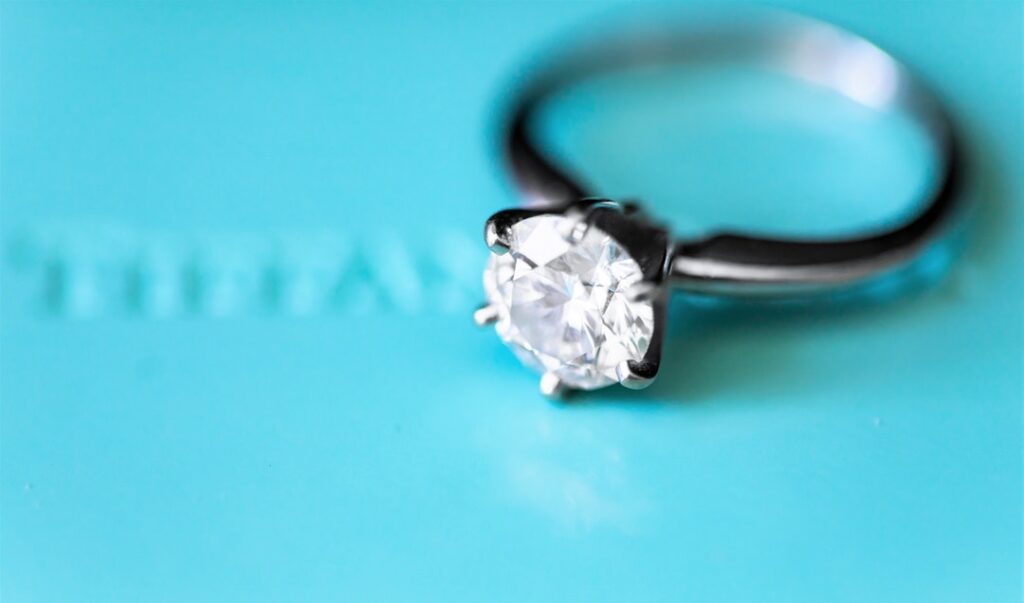
The average American spends $6,351 on an engagement ring. Before the buyer starts the search, if they’re like most, they assume the bigger the diamond, the better.
Entering into a diamond purchase with that mentality could lead you astray without some more information. Another common diamond-buying misconception is that the carat of a diamond is its size.
If you’re ready to shop for a special occasion diamond or an engagement ring, you need to know more about diamond carats.
Read on to learn more about diamond carats to make an informed diamond purchase.
As you start your education in diamonds before making a big purchase, you’ll quickly hear the term the 4Cs: cut, color, clarity, and carat weight.
Interestingly, most people associate carat weight with how large the diamond looks. In fact, the clue is the word weight.
The carat of a diamond is not the size of the diamond in appearance. Instead, it’s the weight of the diamond. The carat weight for a one-carat diamond is .200 grams.
Yet, you could walk into a jewelry store and ask to see one-carat diamonds, and they would all appear very different.
Once you know that a diamond’s carat is based on its weight and visual size can change how you consider diamonds. It also helps to understand how diamonds were measured historically.
Early diamond traders, for example, would weigh precious stones against the weight of the seeds of the carob tree. In 1953, the Gemological Institute of America (GIA) developed the Four Cs system.
Before the development of this system, buying and evaluating the quality of a diamond was quite subjective. You might have heard that this is a diamond that’s a “gem of the first water,” meaning it was highly valuable.
Another diamond might have been classified as “second” and “third water.”
Once the 4C system for diamond evaluation came about, it gave diamond buyers a more objective way to evaluate what they were buying.
This includes the carat weight, which, remember, was how much the diamond weighs, not its overall size.
The importance of the diamond carat matters in a way you might not expect. Remember, you could have a one-carat diamond (its weight) that appears quite different in its cut or visual size.
When you consider carats in diamonds, what you’ll really be considering is the cost of the diamond.
In most cases, of the 4Cs, the carat weight will have the most significant impact on the cost of the diamond overall.
When you’re ready to buy a diamond, the carat weight can be as important as you feel it needs to be. You could get a larger carat weight and sacrifice some on cut and color.
If how the diamond sparkles are a high priority, then cut and color will play as big of a role as carat size.
If you made a diamond size comparison, the size of the diamond would be impacted by where it holds its carat weight and the dimensions of the stone.
It’s important to understand how the cut can impact size. For example, you could have a higher-carat diamond with poor quality that actually looks smaller than a smaller-carat diamond with good quality.
When you consider where a diamond holds its weight, the cut of the diamond is a factor. Diamonds with unusual cuts typically appear larger than a traditional round-cut diamond.
Several factors impact cost, carat weight being one of the more significant factors. If a diamond’s cut, clarity, and color are all equal, generally speaking, then the larger the carat weight, the more it will cost.
You could have two diamonds of equal carat weight with significantly different costs.
One of those diamonds could have outstanding clarity and color compared to the other diamond, making it cost more, even though their carat weight is the same.
Carat weight vs. total carat weight can be misleading for many diamond shoppers. Some diamond sellers might even use this to be a little deceptive for buyers, especially ones who come in looking for the most carats.
Carat weight refers to the weight of the main diamond in a ring. Many engagement rings come pre-set or even in a set with a wedding band.
Total carat weight will factor in all of the diamonds that are in the ring together. This may include smaller diamonds like melee diamonds used in a halo or pavé band and any side stones.
When considering the specifications of a ring, be sure to clarify if the carat weight is the ring‘s total carat weight or the main stone’s carat weight.
When you’re ready to buy diamond jewelry, it’s important to know a few things. First, of course, you need to know your personal budget for the purchase.
Once you have a budget in mind, what you can get for that amount can vary greatly.
Many experts suggest you focus on the cut of the diamond instead of the carat weight. A diamond with a quality cut offers many benefits.
It can help the diamond to appear more brilliant. It can hide flaws and mask color imperfections, too.
A diamond with a quality cut can actually make one with a smaller carat weight appear larger.
There are many misconceptions about diamond carat weight. Once you understand that carat weight is not directly the size of the diamond but rather the weight, it can help in your diamond shopping.
If you’re ready to shop for a diamond, we can help. Contact us today to set up your Finer custom jewelry appointment.